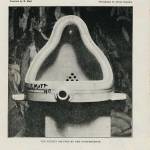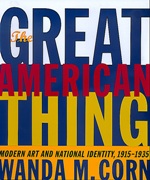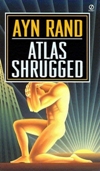 Marcel Duchamp’s urinal was named most influential work of modern art of all time, according to a vote by 500 critics. Duchamp named it Fountain.
Marcel Duchamp’s urinal was named most influential work of modern art of all time, according to a vote by 500 critics. Duchamp named it Fountain.
It was initially rejected for display at the Society of Independent Artists exhibit in 1917, whereupon Duchamp’s allies argued that it was a worthy work of art along four lines:
“First, Fountain represented everyday American street culture. … Second, it is a work of art because an artist chose it, placed it in a gallery, and as a result made us see it differently. … Third, Fountain is an appropriate work of art in a country whose greatest art forms are, not painting and sculpture, music and literature, but ‘plumbing and bridges.’ … And finally — Duchamp’s American friends agreed — Fountain was beautiful in its chaste surfaces and sculptural form, reminding several commentators of a traditional Madonna or Buddha. (‘Buddha of the Bathroom’ was the title of one apologia.)”
 The quotation is from Wanda M. Corn’s The Great American Thing: Modern Art and National Identity, 1915-1935 (Berkeley: University of California Press, 1999, pp. 48-49). Corn’s book is a good art history with an occasionally distracting postmodernist overlay.
The quotation is from Wanda M. Corn’s The Great American Thing: Modern Art and National Identity, 1915-1935 (Berkeley: University of California Press, 1999, pp. 48-49). Corn’s book is a good art history with an occasionally distracting postmodernist overlay.
(My interpretation of Fountain is toward the end of this short piece: “Post-postmodern Art” (or PDF here).
Incidentally, Jerry Saltz, a senior art critic for New York Magazine, makes a strong connection between Duchamp and Immanuel Kant’s theory of the sublime in art. Writing in the Village Voice, Saltz says: “Fountain brings us into contact with an original that is still an original but that also exists in an altered philosophical and metaphysical state. It is a manifestation of the Kantian sublime: A work of art that transcends a form but that is also intelligible, an object that strikes down an idea while allowing it to spring up stronger. Its presence is grace.”
Which connects us to these two challenging intellectual history questions: What is the connection between Kant and modern art? and Is modern art too complicated for us?
 But here’s the sideways connection to the character Lillian Rearden, prompted by the “plumbing and bridges” reference in the quotation from Corn’s book. When we first meet Lillian in Chapter Two of Atlas Shrugged, the first words out of her mouth, as her steel magnate husband Hank Rearden arrives home, are “— but it’s just that a man of culture is bored with the alleged wonders of purely material ingenuity. He simply refuses to get excited about plumbing.” Of course, Hank Rearden produces much of the plumbing that Lillian disparages, and he is the designer of an innovative bridge over a Colorado chasm.
But here’s the sideways connection to the character Lillian Rearden, prompted by the “plumbing and bridges” reference in the quotation from Corn’s book. When we first meet Lillian in Chapter Two of Atlas Shrugged, the first words out of her mouth, as her steel magnate husband Hank Rearden arrives home, are “— but it’s just that a man of culture is bored with the alleged wonders of purely material ingenuity. He simply refuses to get excited about plumbing.” Of course, Hank Rearden produces much of the plumbing that Lillian disparages, and he is the designer of an innovative bridge over a Colorado chasm.
So: plumbing and bridges. Is it a coincidence that — of the thousands of items of modern technology that could have been mentioned — Rand chose the two Duchamp’s defenders chose?